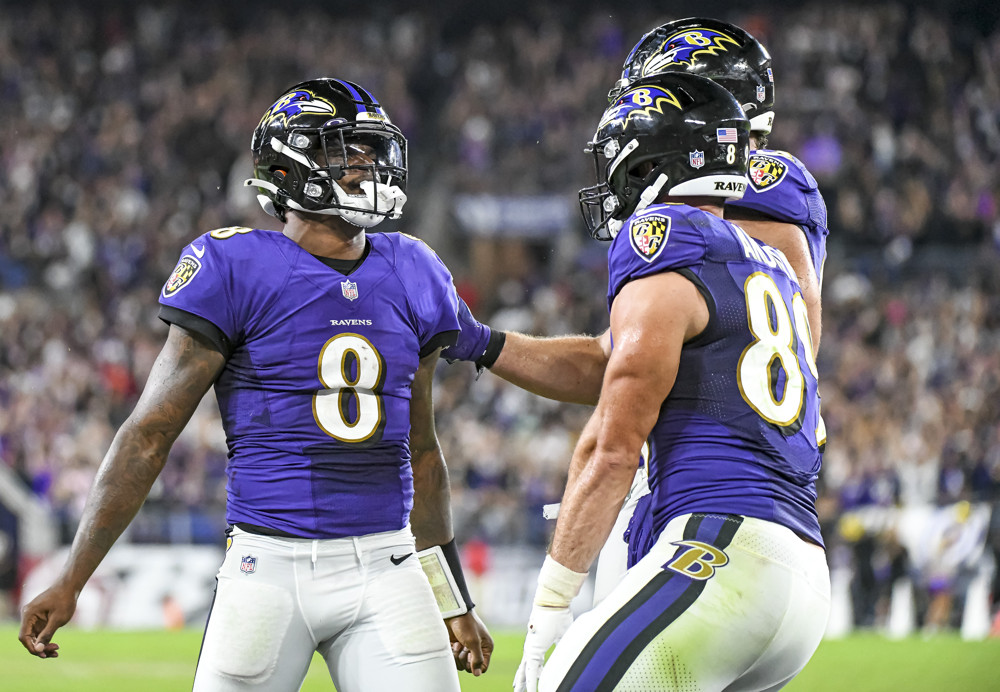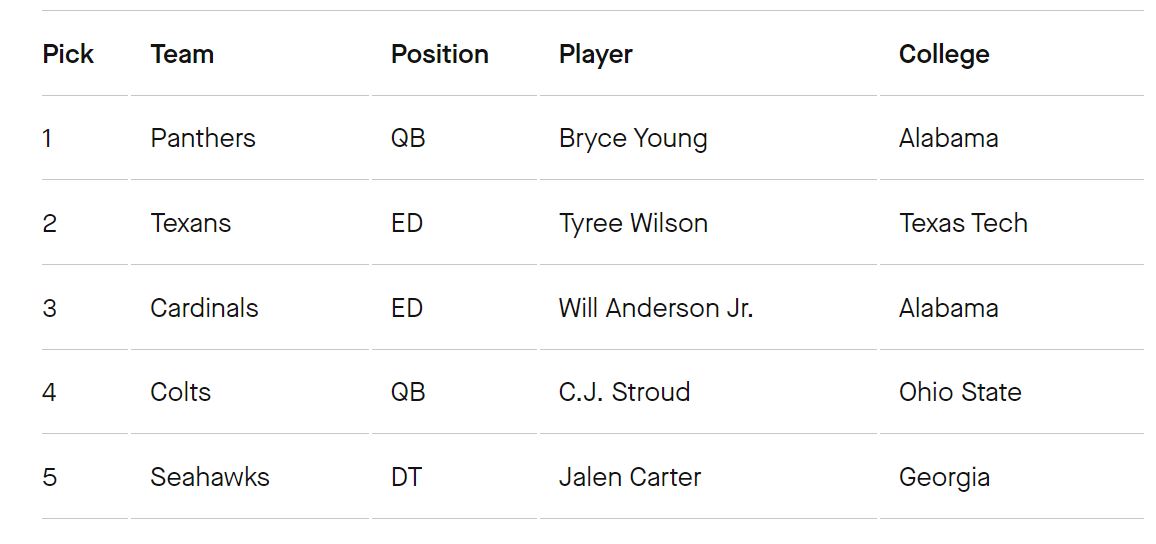For the second straight week, the SIS R&D staff convened on the Off the Charts podcast to talk about their Top 10 NFL players at a position (LISTEN HERE). But to do this, we pit two methodologies against each other:
- The “Scouts”, which comes down to the film-based opinions of Matt Manocherian and Bryce Rossler, each of whom has a lot of experience breaking down film and scouting players (Matt having done it for NFL teams).
- The “Stats”, which involves James Weaver and Alex Vigderman devising a ranking based on a suite of metrics, and having that ranking speak for itself.
Officially, Sports Info Solutions does not condone the dichotomy between scouting and statistical analysis. Each of them provides data in their own way and should inform our evaluation of a player.
When we originally produced the Football Rookie Handbook before transitioning that content to our NFL Draft site, we put the scouting reports and stats side-by-side with the idea that the reader would bounce back and forth between them and leverage both to come to a conclusion about a prospect.
So, without further ado, let’s get to these ‘Best Receivers in the NFL’ lists and then do a deep dive on why each group ranked as it did.
| Scouts’ Opinion | Statistical Analysis |
| 1. Tyreek Hill | 1. Cooper Kupp |
| 2. Justin Jefferson | 2. Davante Adams |
| 3. Ja’Marr Chase | 3. Stefon Diggs |
| 4. A.J.Brown | 4. Justin Jefferson |
| 5. Davante Adams | 5. A.J. Brown |
| 6. Stefon Diggs | 6. Amon-Ra St. Brown |
| 7. CeeDee Lamb | 7. Deebo Samuel |
| 8. Jaylen Waddle | 8. Tyreek Hill |
| 9. Cooper Kupp | 9. CeeDee Lamb |
| 10. Deebo Samuel | 10. DeVonta Smith |
The Stats List Methodology
The stats-based ranking includes a three-year recency-weighted average of a player’s results across several different metrics, with the following weights applied to each:
- 50% Receiving Total Points
- 10% Run Blocking Total Points
- 10% Positive% vs. Man Coverage
- 10% Target Rate Above Expectation
- 10% On-Target Catch Rate
- 10% Broken+Missed Tackles per Reception
We unsurprisingly lean heavily into Receiving Total Points, because it’s a catch-all metric that incorporates many of the other elements we might care about, and is a volume stat, meaning full-time players will be given credit for that.
Run blocking is included because it is a part of every receiver’s job, but some players (like Cooper Kupp) are more crucial to their team’s overall success because of it. More a feather-in-the-cap type inclusion.
We wanted to have some measure of success against man coverage, so we included Positive%, which is just asking how often their targets result in positive EPA. This technically includes quarterback play, which isn’t optimal, but the man coverage split is important enough that we kept it in.
Target Rate Above Expectation takes into account a variety of factors to estimate how likely a player is to earn a target on a play, so it’s not just a matter of getting a lot of screens. You need to get open consistently beyond having a lot of schemed looks to have good results.
And lastly we included measures of hands and elusiveness, and specifically metrics that we feel are the best evaluators of these specific skills in isolation.
What The Scouts Thought
Matt and Bryce leaned heavily into the value of being disruptive from a game-planning perspective. The best players should be the answer to “Who scares me the most?”
Matt would have put Ja’Marr Chase second on the list, specifically noting that he forces the opponent to play 10-on-11 when he’s on the field. (We’ll talk about Chase more in a bit). While at times his production has looked similar to teammate Tee Higgins, that fear factor contributes to Chase’s rank here.
Matt and Bryce debated the Davante Adams/A.J. Brown rankings as much as any of them, with age starting to contribute a bit to the evaluation of Adams. Brown’s beat-you-by-speed-or-by-physicality skill set won out, but Adams could have won out because of his surprising strength and acrobatics at the catch point.
Despite an unbelievable 2021 season, Cooper Kupp’s injury-hampered 2022 dropped him on the scouting rankings. This is admittedly a bit of a hedge against his injury risk and age (relative to some of the others on the list), but in half a season in 2022 he still racked up 75 catches, so he’s not slowing down just yet.
What The Stats Showed
The stats-based list has 8 out of 10 of the same names, but there are still some pretty stark differences. Kupp at No. 1 is a little surprising because he missed half of his most recent season, but record-setting production in the prior year and a half more than moves the needle.
Kupp ranked in the top five in 3-year Receiving Total Points, Run Blocking Total Points, and Target Rate Above Expectation.
The most alarming discrepancy between the scouts and stats is Chase, who ranked 3rd by the scouts and 28th by the stats.
Part of this is Chase missing a handful of games in 2022, which sinks him to 24th in the Receiving Total Points weighted average. But he also didn’t rank higher than 20th in any of the metrics. Beyond that, his 84% On-Target Catch% puts him in the bottom quarter of qualifying receivers.
The Dolphins receivers also stand out in contrast. Tyreek Hill’s mind-blowing skill set—and how that affects game-planning—is tough to account for statistically, but so is his effect on other players on the offense. His value in stretching the field and drawing attention is probably enough to make the difference between his ranks on these lists.
Jaylen Waddle ranks 61st on the stats-based list, largely because of problematic usage in his rookie year and some hands issues.
In 2021 his average target depth ranked 11th-lowest of 89 receivers with at least 50 targets, and he combined that with a pretty high number of drops for that usage. In 2022 that was a different story.
A year from now it won’t be surprising to find him surging up these rankings.


